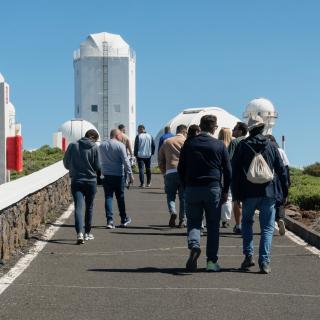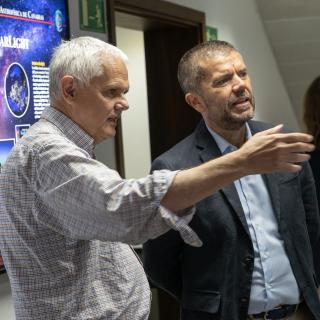It may interest you
-
 The Instituto de Astrofísica de Canarias (IAC) has initiated a project of science outreach in the Tenerife-II prison in El Rosario, with the aim of bringing knowledge about the Universe to the prisoners, as well as to the educational and other working personnel at that centre. This initiative is taken in the framework of the commitment of the IAC to the popularization of science as a tool for inclusión and social transformation. The project is led by the astrophysicist, and IAC researcher David Aguado and is a continuation of a first experiment in 2024 in the Madrid V prison at Soto del RealAdvertised on
The Instituto de Astrofísica de Canarias (IAC) has initiated a project of science outreach in the Tenerife-II prison in El Rosario, with the aim of bringing knowledge about the Universe to the prisoners, as well as to the educational and other working personnel at that centre. This initiative is taken in the framework of the commitment of the IAC to the popularization of science as a tool for inclusión and social transformation. The project is led by the astrophysicist, and IAC researcher David Aguado and is a continuation of a first experiment in 2024 in the Madrid V prison at Soto del RealAdvertised on -
 An international scientific team, including members of the Instituto de Astrofísica de Canarias (IAC), has launched an ambitious program to map exoplanets located around the Neptunian Desert —a region around stars where planets the size of Neptune are very rare— in order to better understand the mechanisms of planetary system evolution and formation. This scientific expedition has delivered its first results with the observation of the TOI-421 planetary system. Analysis of this system reveals a surprisingly inclined orbital architecture, offering new insights into the chaotic history ofAdvertised on
An international scientific team, including members of the Instituto de Astrofísica de Canarias (IAC), has launched an ambitious program to map exoplanets located around the Neptunian Desert —a region around stars where planets the size of Neptune are very rare— in order to better understand the mechanisms of planetary system evolution and formation. This scientific expedition has delivered its first results with the observation of the TOI-421 planetary system. Analysis of this system reveals a surprisingly inclined orbital architecture, offering new insights into the chaotic history ofAdvertised on -
 Una delegación de la Universidad de La Laguna (ULL), encabezada por el rector Francisco García, ha realizado una visita institucional al Instituto de Astrofísica de Canarias (IAC), reforzando así el compromiso de colaboración y la estrecha relación que mantienen ambas instituciones, claves para el desarrollo científico y tecnológico de Canarias. El encuentro ha servido para revisar el estado del convenio que mantienen ambas instituciones y revisar algunas áreas de mejora para la renovación del mismo en materia de investigación, docencia y divulgación científica, además de aspectosAdvertised on
Una delegación de la Universidad de La Laguna (ULL), encabezada por el rector Francisco García, ha realizado una visita institucional al Instituto de Astrofísica de Canarias (IAC), reforzando así el compromiso de colaboración y la estrecha relación que mantienen ambas instituciones, claves para el desarrollo científico y tecnológico de Canarias. El encuentro ha servido para revisar el estado del convenio que mantienen ambas instituciones y revisar algunas áreas de mejora para la renovación del mismo en materia de investigación, docencia y divulgación científica, además de aspectosAdvertised on
